SIM swapping and port-out fraud are evolving to expand more rapidly and capture data and funds more effectively.
MFA fatigue attacks: what they are, why they threaten your business, and how to stay protected

The use of multi-factor authentication (MFA) has become a widely adopted security standard in corporate environments, especially with the rise of remote work and increased access to critical systems from external locations. Organizations have come to view MFA as an effective barrier against password theft—one of the most common attack vectors.
M
oreover, this type of authentication has become normalized in users’ daily lives: it’s no longer surprising to be asked for an extra verification step to access email, social media, or financial applications. This familiarity with the process has created a sense of routine that, paradoxically, can become a vulnerability when the authentication channel is abused.
However, this trust is not absolute. In recent years, attackers have developed new social engineering techniques to bypass even advanced security mechanisms like MFA. One of the most concerning is known as MFA Fatigue, a type of attack that enables unauthorized access without needing to technically breach systems.
What is an MFA Fatigue Attack?
An MFA Fatigue attack, also referred to as MFA prompt bombing, is a social engineering technique that abuses multi-factor authentication through repeated push notifications. Rather than attempting to break into a system directly, the attacker targets the end user’s behavior to gain unauthorized access.
This type of attack typically occurs when an attacker has already obtained valid credentials from a victim (for example, through phishing or a prior data breach). The attacker then initiates multiple login attempts, triggering a flood of authentication requests on the user’s device—usually push notifications through a security app. The goal is to cause fatigue, confusion, or frustration, until the victim approves one of the requests either by mistake or simply to stop the interruptions.
This phenomenon is known as authentication fatigue because it takes advantage of the repetitive and routine nature of MFA to wear down the user’s vigilance. In an environment where people are used to approving prompts almost without thinking, the attacker’s persistence ultimately overcomes human resistance—opening a door that, from a technical standpoint, remains closed.
Real-World cases: From Uber to a growing global trend
- Uber (2022): An attacker used social engineering techniques to bombard an employee with push requests until one was approved, granting access to internal systems.
- Microsoft (2023): Corporate accounts were targeted in multiple attacks involving push notification abuse, in campaigns linked to the threat actor group Storm-0558.
- Cisco (2023): Reports from Cisco Talos indicated that some initial access was gained through MFA prompt abuse prior to a lateral movement phase within the network.
- Okta (2024): Several incidents were linked to compromised credentials and the use of MFA fatigue as an entry technique, impacting federated identity providers.
In all cases, initial access was granted due to human error caused by persistent prompting—not a direct technical failure in the authentication systems.
Why this should matter to your business
For organizations, MFA fatigue attacks are far more than a technical nuisance—they represent a direct risk to business continuity, corporate reputation, and regulatory compliance.
First, the modern work environment is highly interconnected and exposed. Companies increasingly rely on SaaS tools, remote access, personal devices, and hybrid infrastructures—all of which expand the attack surface. In this context, a single unauthorized access point can trigger a domino effect across the corporate infrastructure.
Moreover, the effects of an MFA fatigue intrusion can be difficult to detect: the attacker logs in with valid credentials, which often go unnoticed by conventional monitoring systems. This delays incident detection and amplifies the impact.
There is also a strong regulatory component: many companies must comply with well-known standards such as SOC 2, ISO 27001, NIS2, or the GDPR. An incident caused by weak or negligent authentication practices can lead to penalties or the obligation to report breaches to clients and authorities.
Lastly, there’s the human factor. Companies do not always provide sufficient training to their users regarding the risks of approving unfamiliar notifications. This lack of awareness increases the effectiveness of these attacks.
For all these reasons, organizations must approach the problem with a comprehensive strategy: it’s not enough to implement MFA—authentication must be reinforced with adaptive controls, intelligent monitoring, and a security culture that holds users accountable and keeps them protected.
How to protect against MFA “Prompt Bombing” attacks
Protecting against MFA fatigue attacks requires action on two levels: the individual level (end users) and the organizational level (security configurations, policies, and technology).
Recommendations for users:
- Never approve an access request unless you are actively trying to log in.
- Immediately report any unusual behavior or multiple unsolicited notifications.
- Enable activity logs in services that offer them to verify recent login attempts.
- Use authentication apps based on time-based one-time passwords (TOTP) or physical security keys whenever possible.
Recommendations for organizations:
- Avoid relying solely on push-based MFA. Reinforce it with methods like TOTP, biometrics, or FIDO2 keys.
- Configure attempt limits or temporary lockouts after several consecutive MFA denials.
- Apply adaptive access policies—for example, requiring additional MFA if the IP address is unfamiliar or the device is unrecognized.
- Integrate monitoring solutions that detect anomalous patterns, such as multiple denied requests within a short time frame.
- Provide ongoing training for employees on identifying attack signals and using authentication mechanisms responsibly.
These measures not only reduce the likelihood of a successful attack but also strengthen team confidence in security systems and enable faster incident response.
TrustCloud acts as a strategic ally in designing and implementing robust, personalized authentication strategies tailored to each organization’s risk level, maturity, and specific needs.
Want to know how TrustCloud can help you strengthen your authentication strategy? Contact our team of experts
Best Practices and Recommended Tools
Preventing MFA fatigue attacks requires more than just policies and awareness—it also depends on selecting and properly configuring the right technological tools.
Comparison of multi-factor authentication methods:
- Push notifications: Convenient but vulnerable to fatigue if overused.
- TOTP (time-based one-time passwords): More secure as it requires manual action and time synchronization.
- FIDO2 / physical security keys: Excellent protection against remote attacks; ideal for high-security environments.
- Biometrics: Convenient, though best combined with additional factors in critical contexts.
Key policies to implement:
- Tiered authentication based on the sensitivity of the resource.
- Monitoring of anomalous events in authentication requests.
- Ongoing staff education through simulations and awareness campaigns.
Selecting the right MFA solution, configuring it strategically, and reinforcing it with monitoring and response technologies is essential to minimizing the risk of MFA fatigue in any organization.
Contact TrustCloud and discover how to turn multi-factor authentication into a real barrier against emerging threats
























